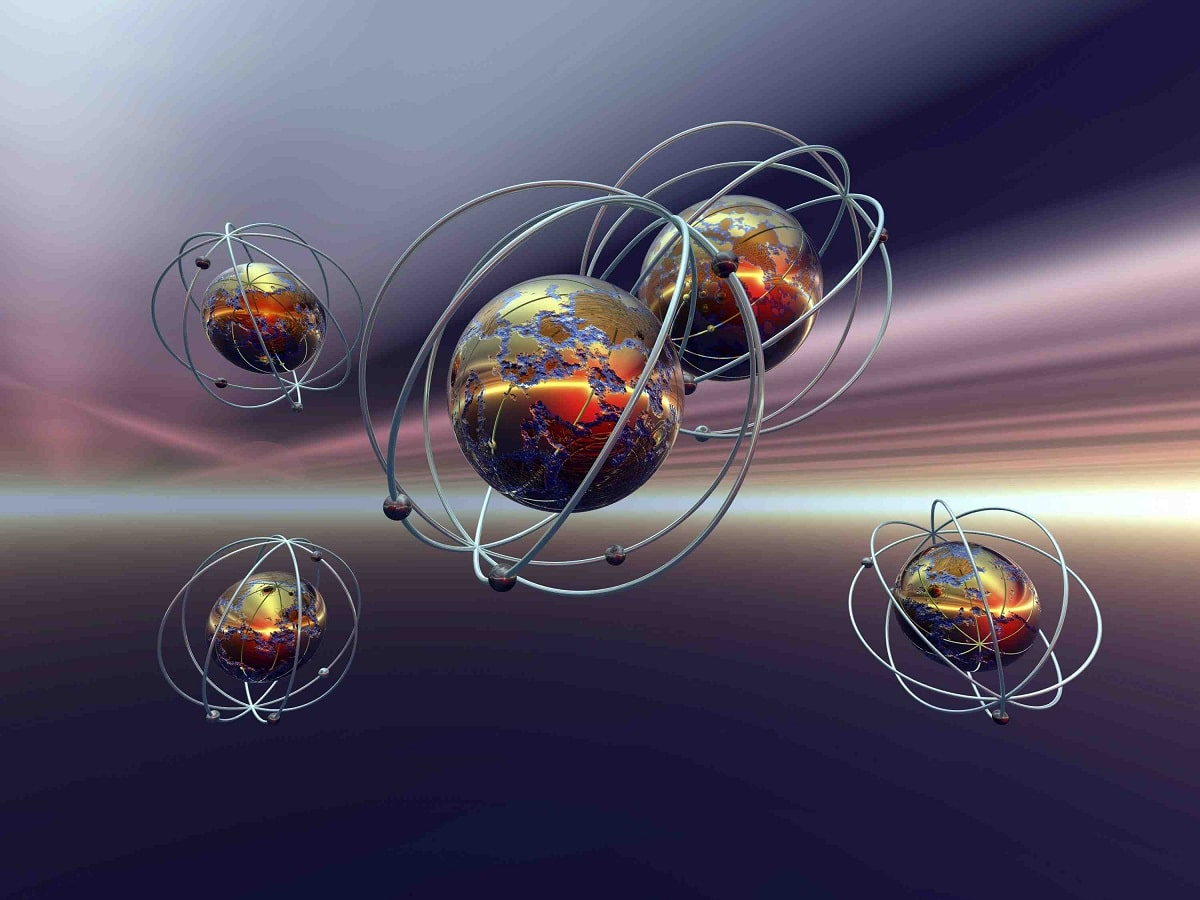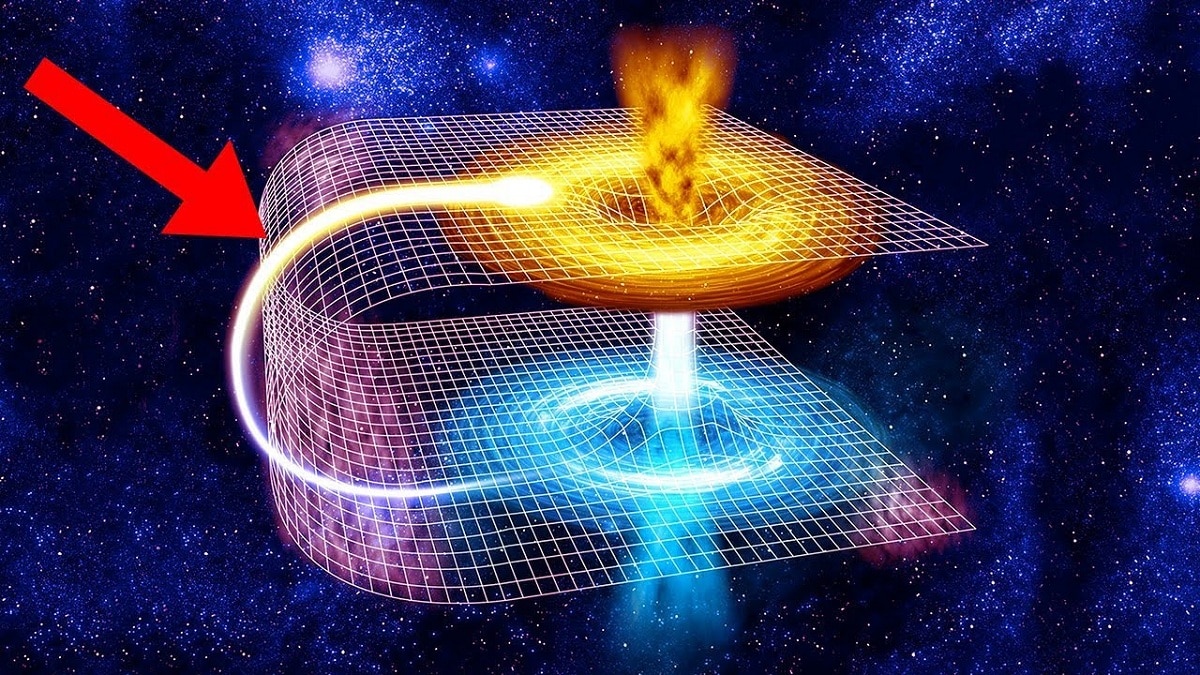
In high school we are used to studying physics. However, there is a type of physics that perhaps everyone is not used to. It's about the quantum physics. Many do not know what quantum physics is. It is a highly debated and fascinating topic that can revolutionize our idea of the universe around us. It is the theory of physics that describes the behavior of matter and also has several applications in everyday life.
Therefore, in this article we are going to tell you what quantum physics is and what its characteristics are.
What is quantum physics

Quantum physics is also called quantum or mechanical theory. Because it is based on a mechanical theory that focuses on the scale of lengths and the phenomena of atomic and subatomic energy, giving new life to previous theories, which are now considered obsolete.
What is the difference between classical physics and quantum physics? The latter describes radiation and matter as dual phenomena: waves and particles. Therefore, the wave-particle duality can be considered as one of the characteristics of this mechanics. The relationship between waves and particles is studied and confirmed through two principles:
- The principle of complementarity
- Heisenberg's uncertainty principle (the latter formalizes the former).
We can certainly be sure that, after the discovery of the theory of relativity and the birth of classical physics, these insights ushered in a new era, modern physics. To study quantum mechanics comprehensively, an integration between different sectors of physics is required:
- Atomic physics
- Physical particles
- Physics of matter
- Nuclear physics
From

Classical physics could not study matter at the micro level in the late XNUMXth century, which can be said to be beyond the scope of atomic measurement. Therefore, it is impossible to study experimental reality, especially phenomena related to light and electrons. But people always want to go further, and his innate curiosity drives him to explore more.
In the early XNUMXth century, discoveries that emerged from the atomic scale challenged old assumptions. Quantum theory was born thanks to a term coined by academic Max Planck at the beginning of the XNUMXth century. The basic concept is that the microscopic magnitude and quantity of some physical systems can even change discontinuously but discretely.
These are the studies and research that made it possible to reach these conclusions:
- 1803: recognition of atoms as a constituent element of molecules
- 1860: the periodic table groups atoms by chemical properties
- 1874: discovery of the electron and the nucleus
- 1887: studies on ultraviolet radiation
The last date can mark the main dividing line. For radiation frequencies below the threshold, the interaction phenomenon (photoelectric effect) between electromagnetic radiation and matter disappears. Due to the photoelectric effect, the energy of the electrons is proportional to the frequency of the electromagnetic radiation. Maxwell's wave theory is no longer sufficient to explain certain phenomena.
Quantum theory
To summarize the factors that contributed to the birth of quantum physics, we can list more important dates that are associated with discoveries and knowledge used to trace the history of quantum mechanics:
- 1900: Planck i.It introduces the idea that energy is quantified, absorbed, and emitted.
- 1905: Einstein demonstrates the photoelectric effect (the energy of the electromagnetic field is transported by quanta of light (photons)
- 1913: Bohr quantifies the orbital motion of the electron.
- 1915: Summerfeld introduces new rules, generalizing quantification methods.
But it was from 1924 that quantum theory, as we know it now, laid the foundations. On this day, Louise de Broggie developed the theory of matter waves. The following year, Heinsburg took over, formulated matrix mechanics, and then Dirac proposed the special theory of relativity in 1927. Until 1982, when the Orsay Institute of Optics completed its investigation of the violation of Bell's inequality, these discoveries they continued one after another.
Principles of quantum physics

Among the most fascinating discoveries we find:
- Wave-particle duality
- Principle of complementarity
- Begining of uncertainty
Wave-particle dualism
Before, only classical physics existed. This was divided into two groups of laws:
- Newton's laws
- Maxwell's Laws
The first set of laws describes the motion and dynamics of mechanical objects, while the second set of laws describes the tendencies and connections between subjects that are part of electromagnetic fields: light and radio waves, For example.
Some experiments show that light can be thought of as a wave. But they have not been confirmed. On the other hand, light has a particle nature (from Einstein and Planck) and, therefore, the idea that it is composed of photons has gained more and more legitimacy. Thanks to Bohr it was understood that the nature of matter and radiation were:
- Make it a wave
- Make it a body
It was no longer possible to think from one perspective or another, but from a complementary perspective. Bohr's complementary principle only emphasizes this point, that is, phenomena that occur at the atomic scale have the dual properties of waves and particles.
Heinsenberg uncertainty principle
As we mentioned earlier in 1927, Heinsenberg showed that certain pairs of physical quantities, such as velocity and position, cannot simultaneously register without error. Accuracy can affect one of the two measurements, but not both at the same time, because phenomena such as speed will affect the other measurement result and invalidate the measurement.
To locate the electron, it is necessary to illuminate a photon. The shorter the wavelength of the photon, the more accurate the measurement of the electron position. In quantum physics, the low wave frequency of photons carries more energy and speed than electrons absorb. At the same time, these measurements cannot be determined.
I hope that with this information you can learn more about what quantum physics is and what its characteristics are.